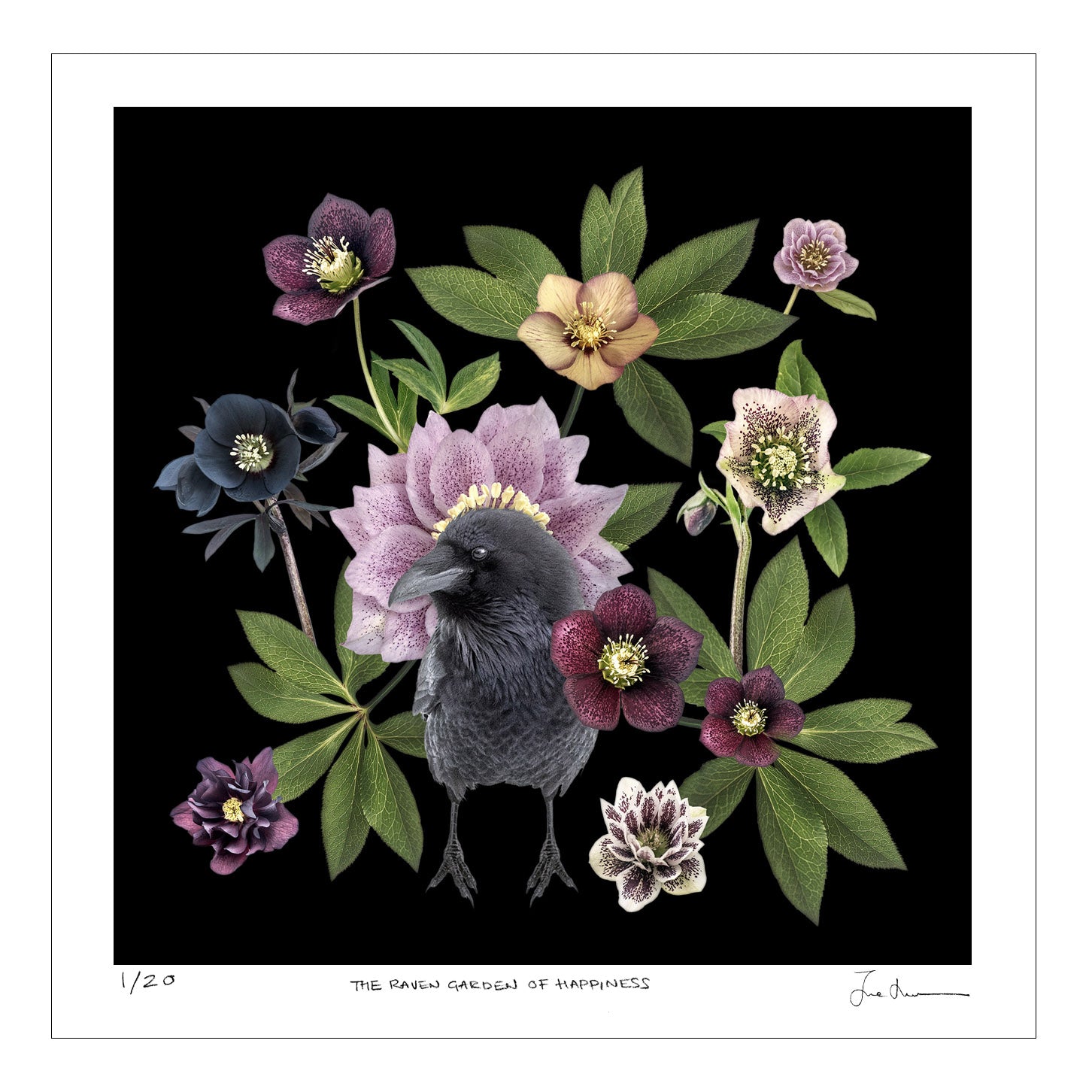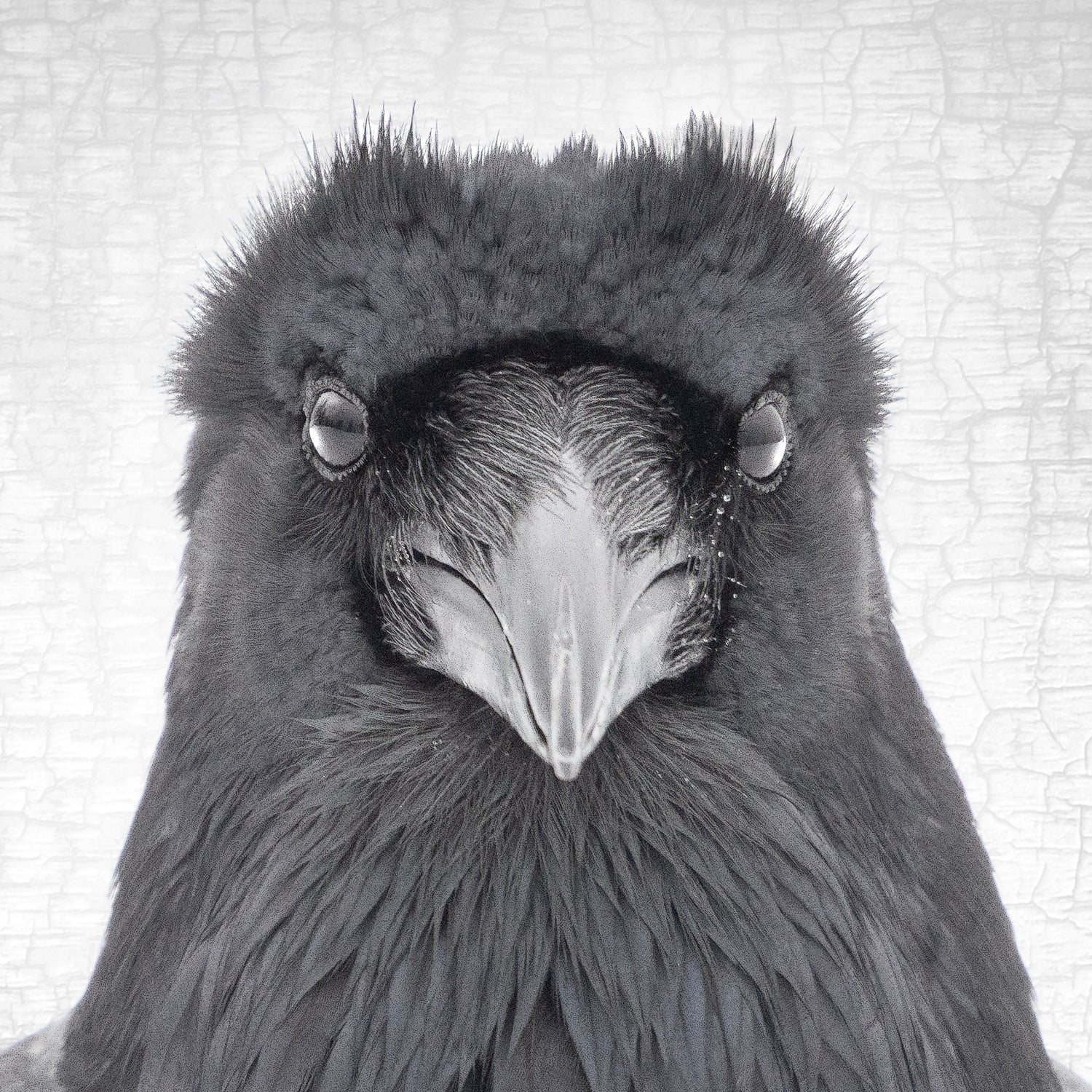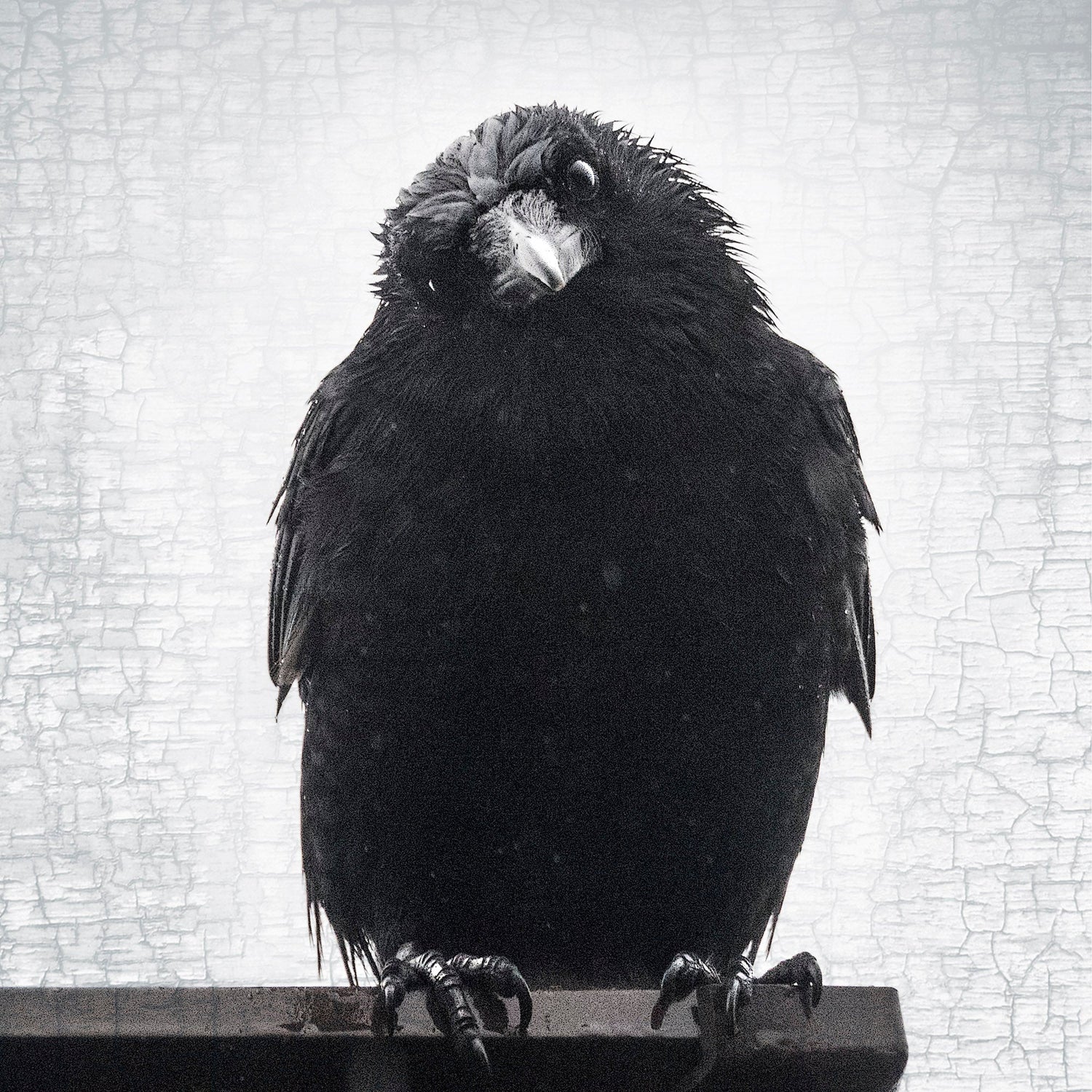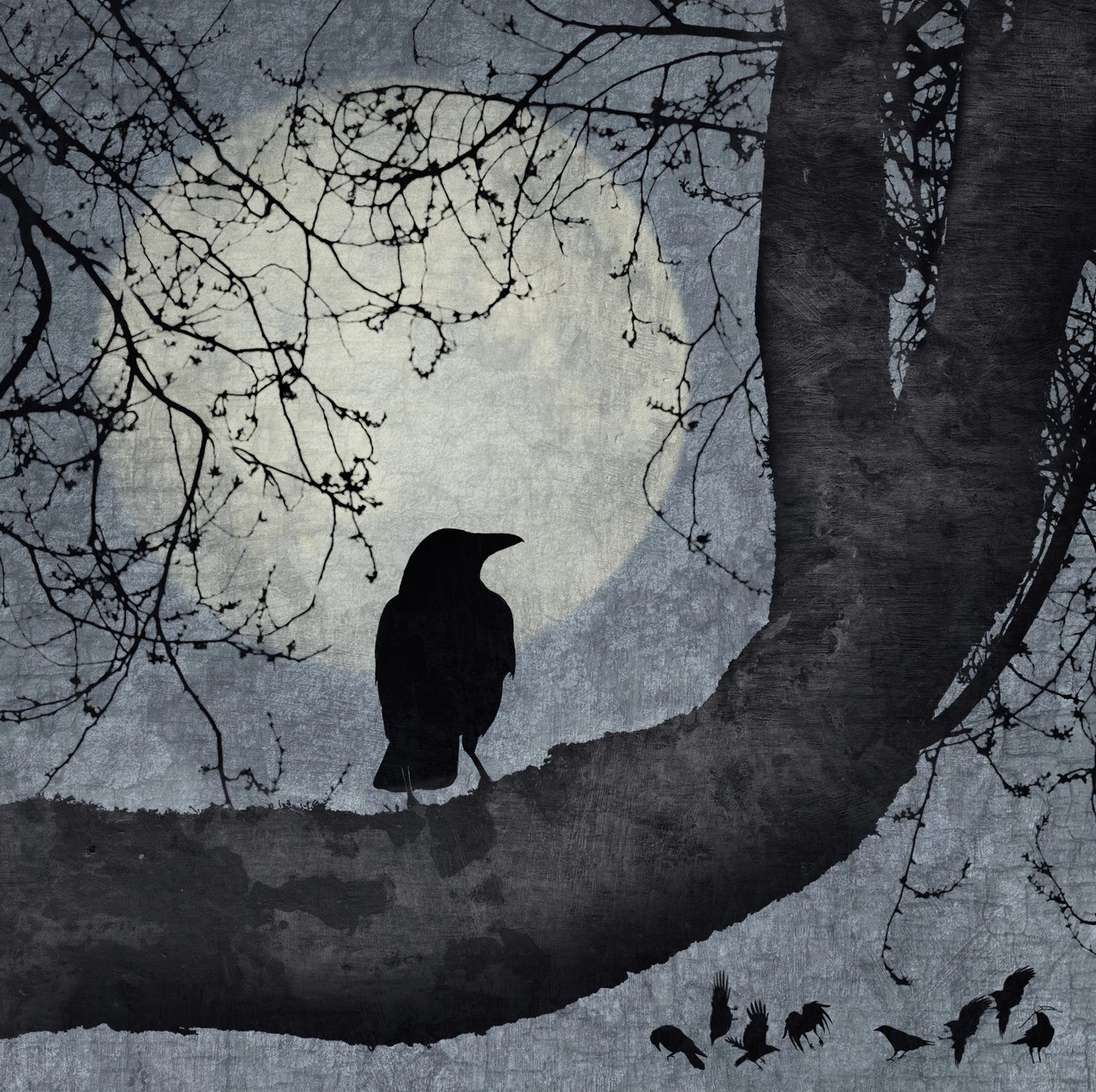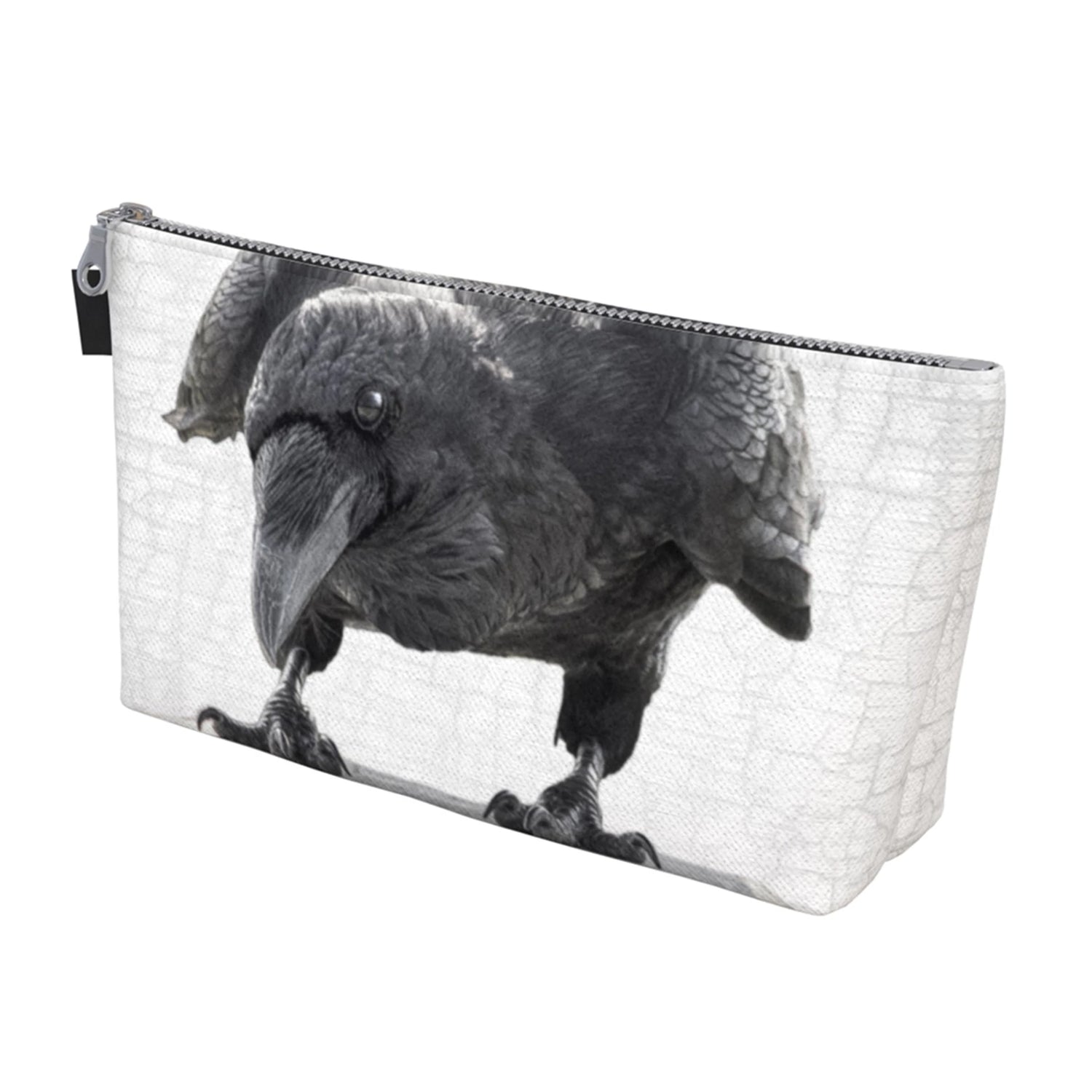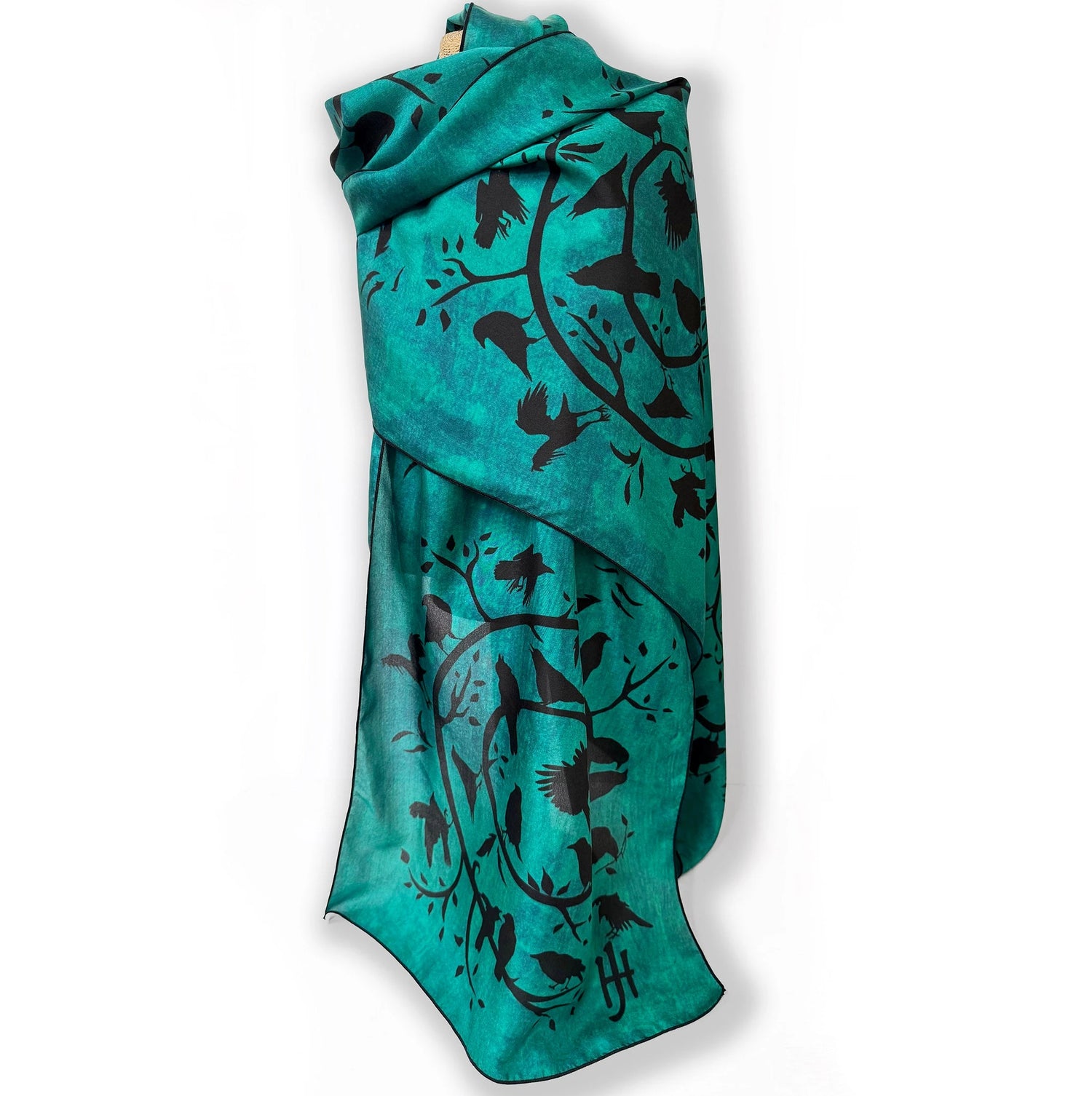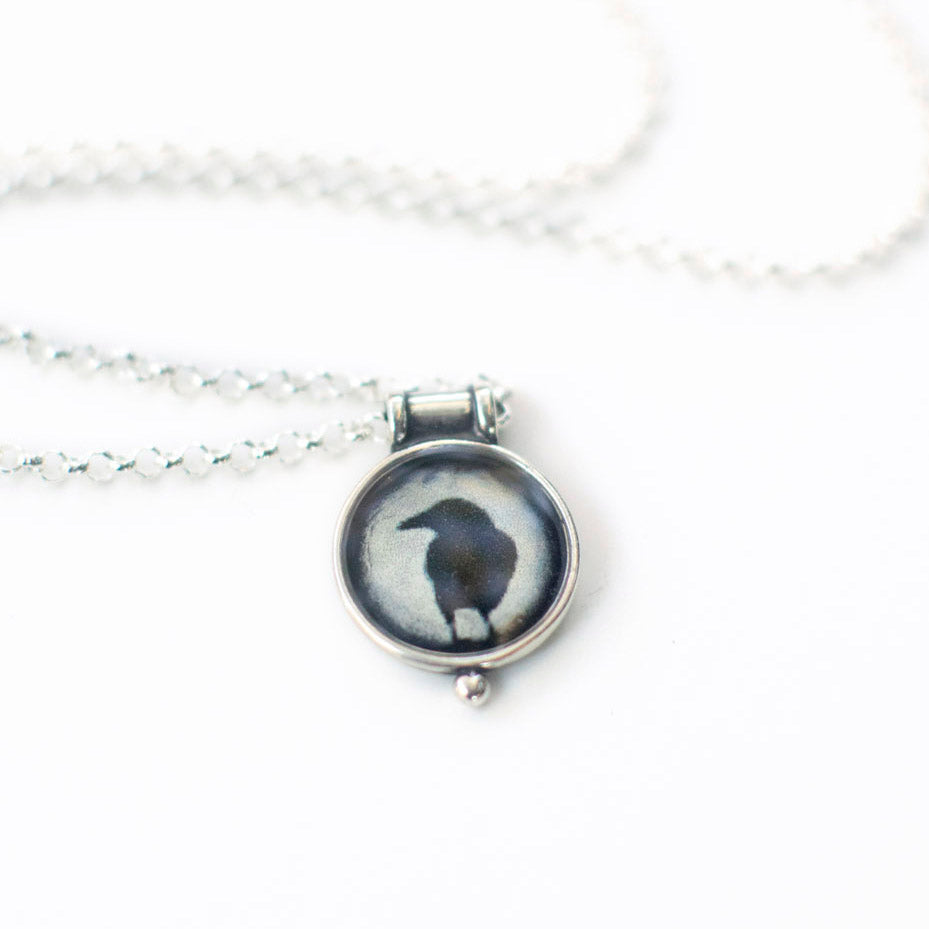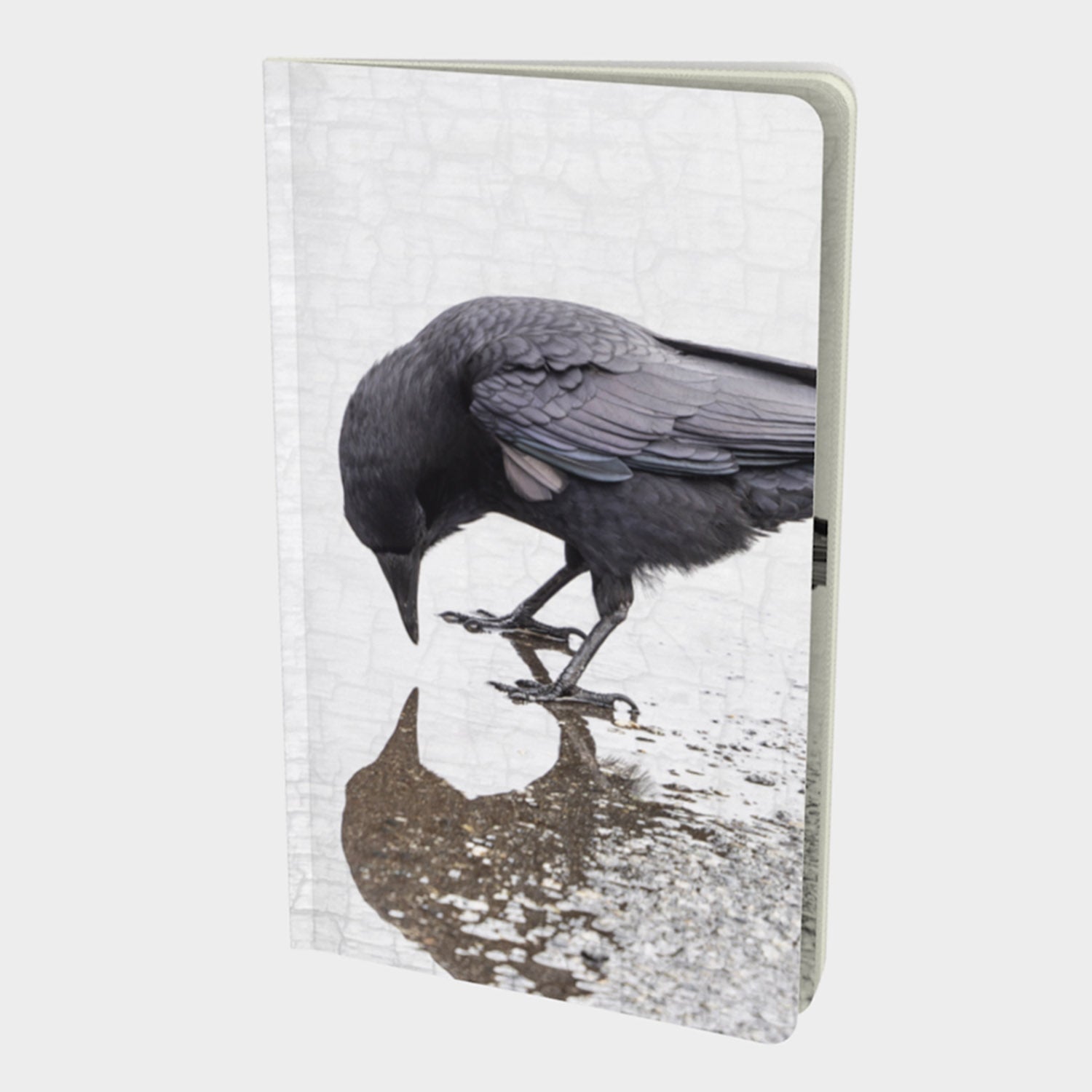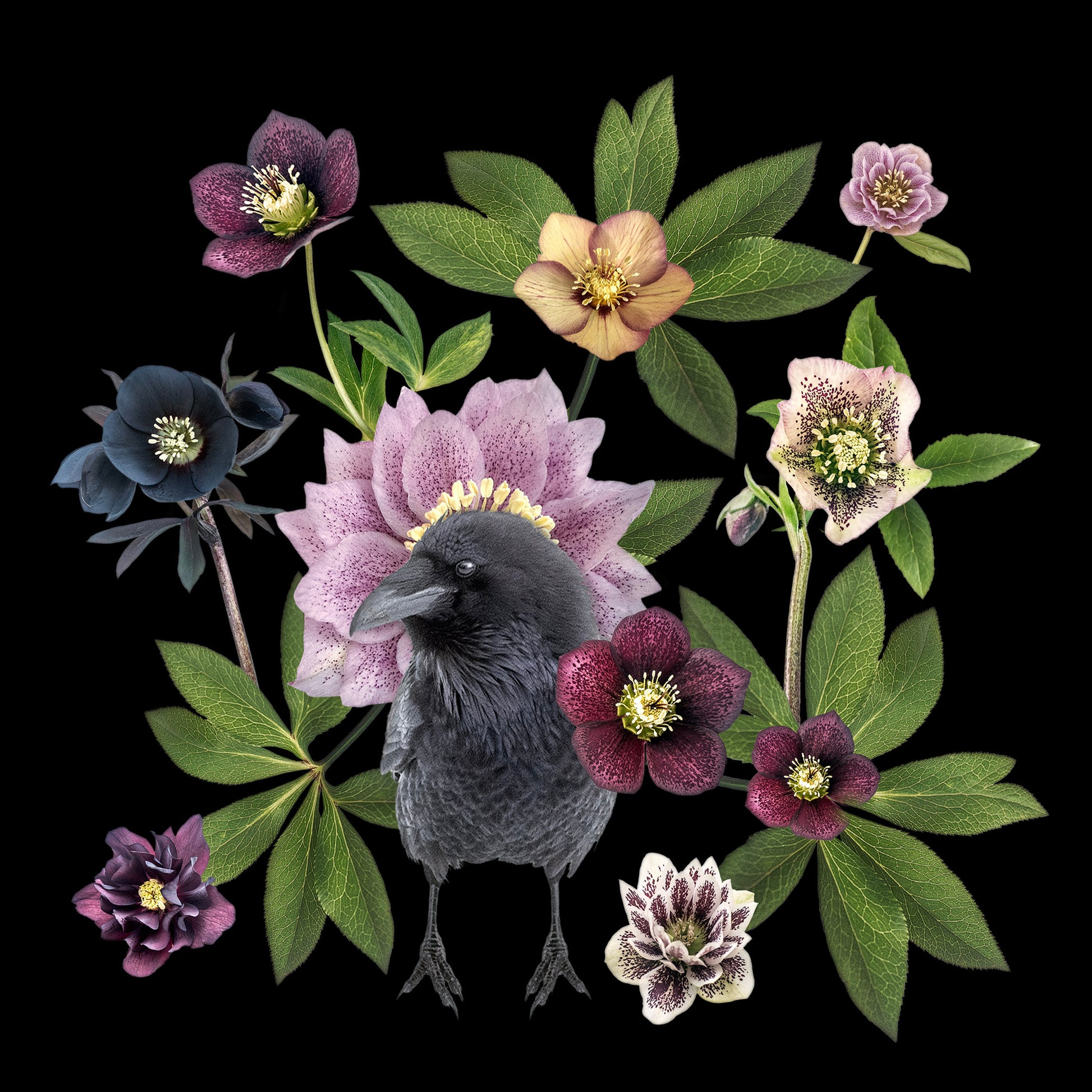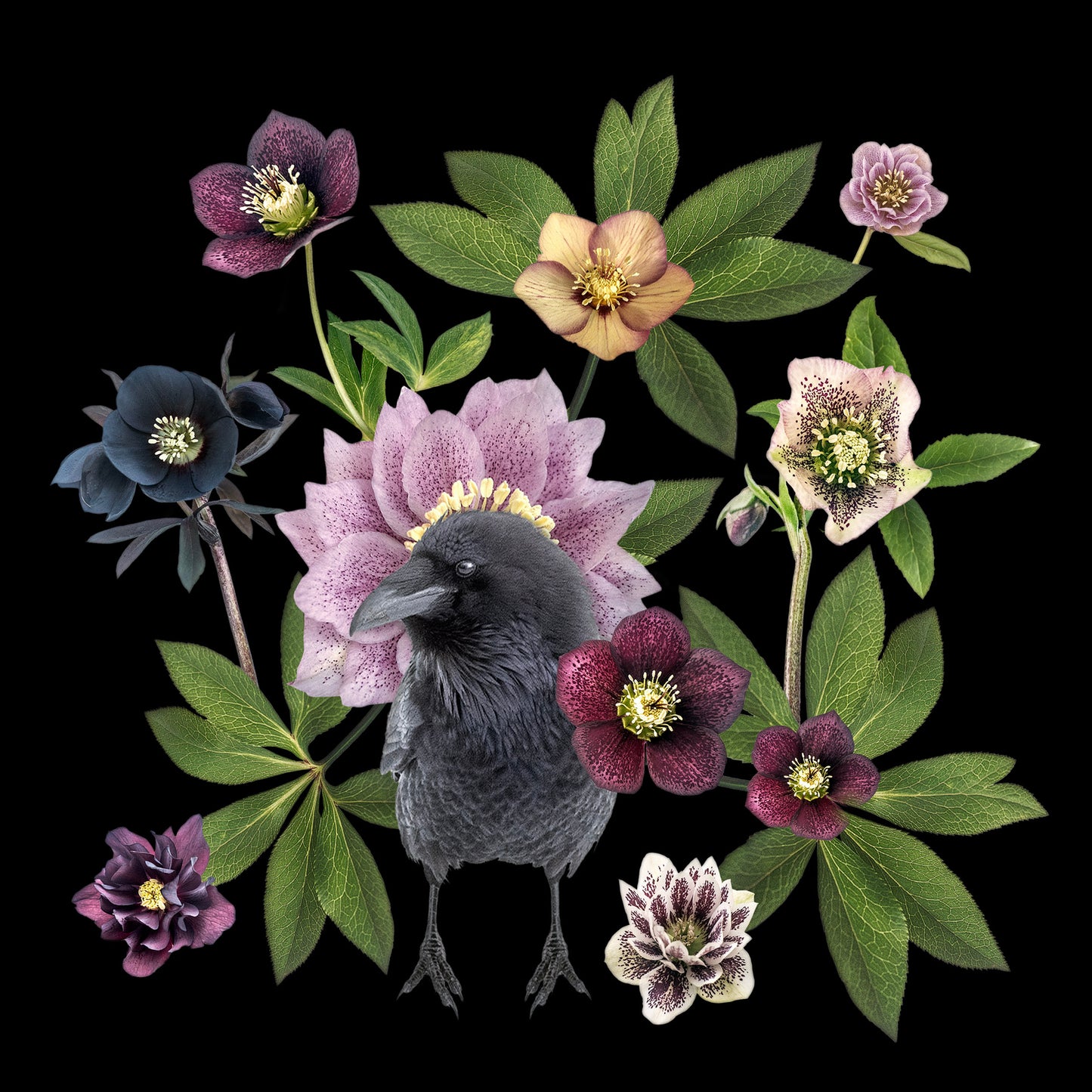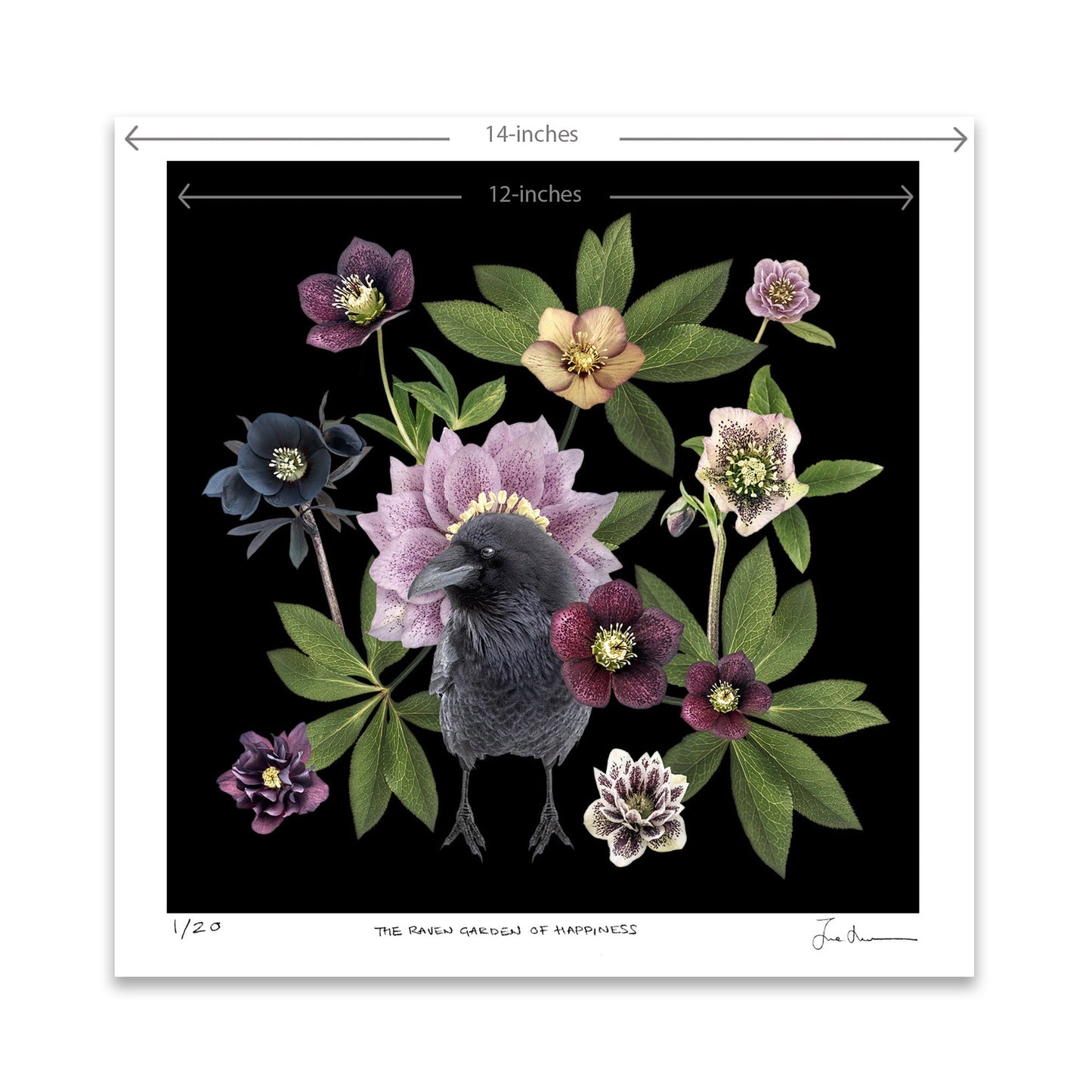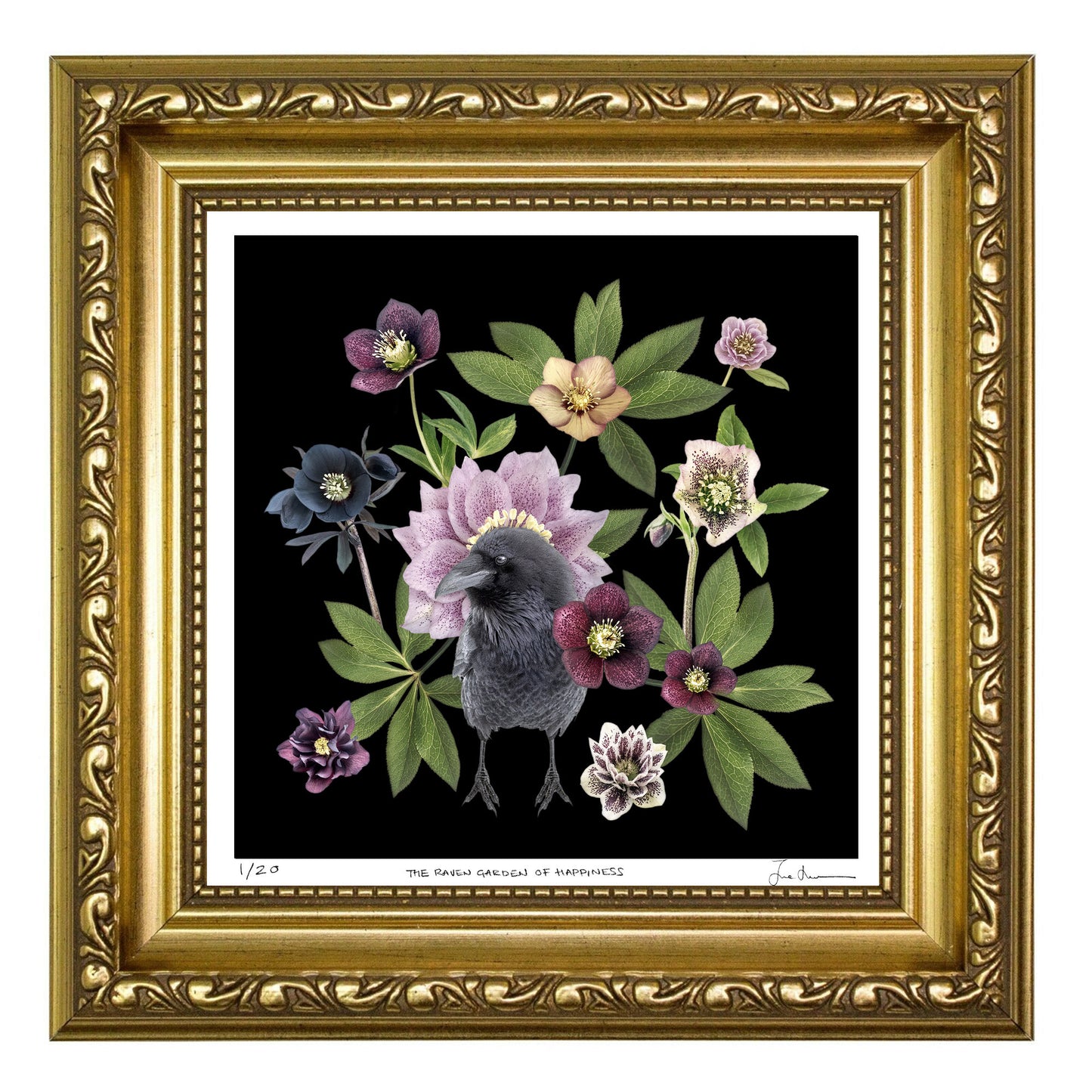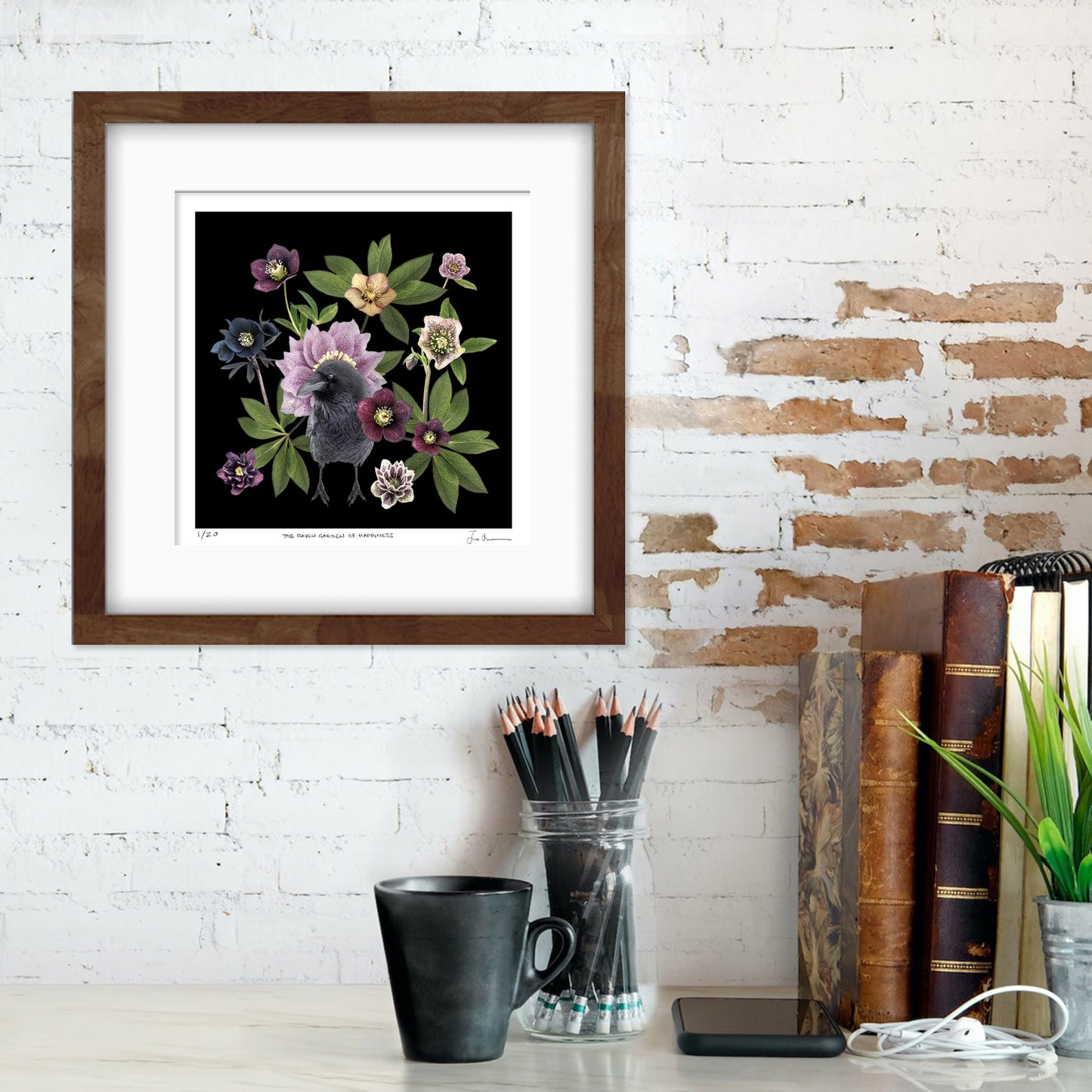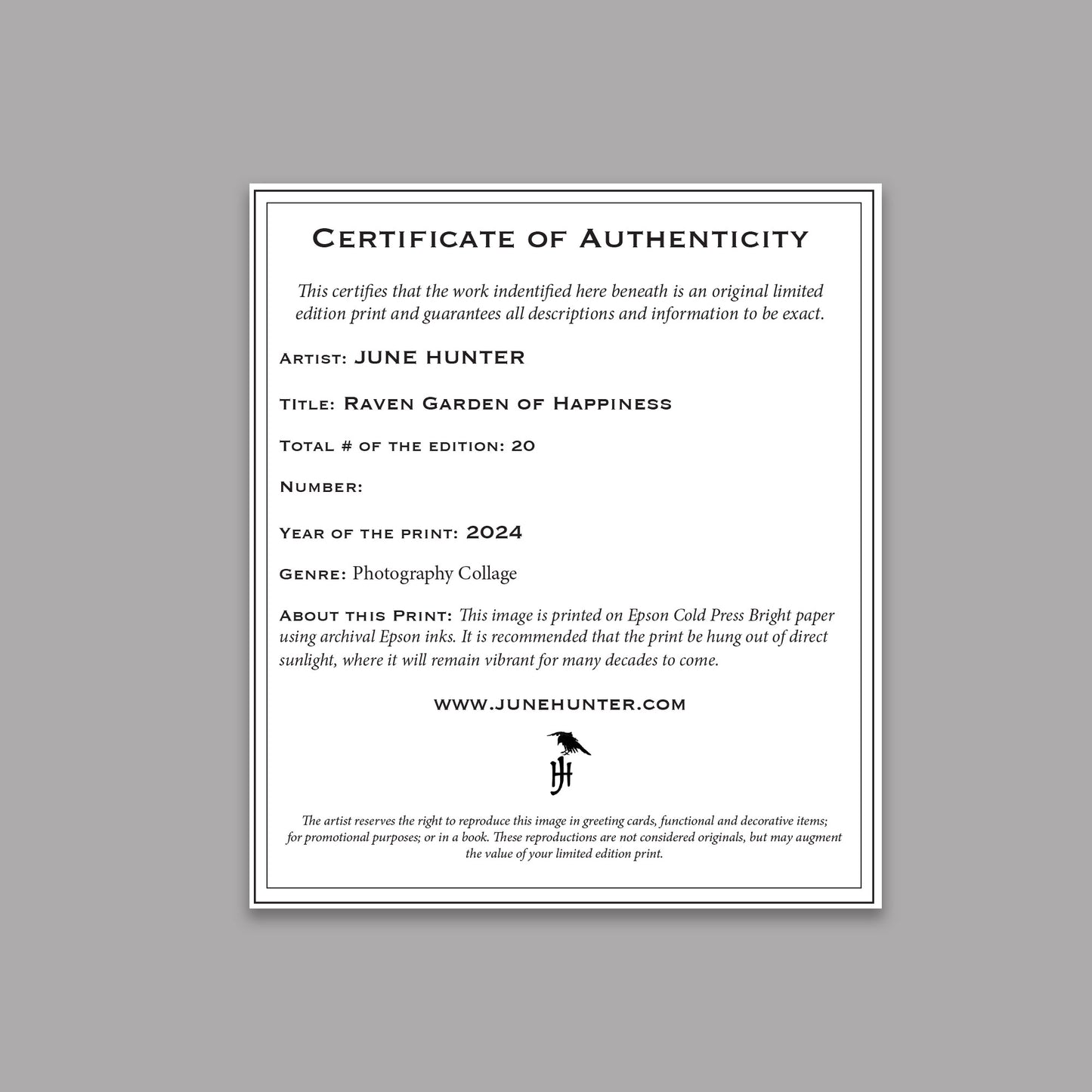Swarm of Crows: Causes, Meaning, History and Mystery
Swarms of Crows at Twilight, Sunrise, and More
What is a group of crows called? Why are they swarming? Is it called a murder? What does it mean when you see a lot of crows?
We answer these questions and more in this article about a swarm of crows.
Featuring photography by June Hunter
Get the print: MOONLIT CROWS >
Crows are social animals and often gather for a variety of reasons.
If you're afraid of crows, a big gathering of crows might seem like a scene from a horror movie or a bad omen. But these large flocks are simply a rather magical part of the natural world and nothing to be concerned about.
In this post, we'll delve into the world of these intelligent birds and explore why and when they fly in groups and gather together. So, let's unravel the mystery of crows congregating and, at the same time, learn a thing or two about these intelligent birds.

What's a Murder of Crows?
A group of crows (Corvus brachyrhynchos) is colloquially known as a "murder."
This nomenclature is derived from historical folklore and cultural superstitions, rather than scientific taxonomy or ethology. Occasionally, crows get into territorial disputes which may culminate in one crow being killed. However this is unusual.
In ornithology—the scientific study of birds—the term “murder” is not commonly used. Instead, scientists typically refer to a group of crows simply as a “flock” or “group.”
The origins of the term "murder" in reference to a group of crows may stem from the Middle Ages when collective nouns were often given to animals based not only on their behaviour but also on superstitions or prevalent attitudes towards them.
Crows, with their dark plumage and a so-called eerie caw, were often associated with omens, foreboding, dead bodies, battlefields and graveyards.
Why Do Crows Gather in Groups?
Crows often flock together
Crows get together en masse for many reasons:
- more efficient foraging
- safety in numbers from predators (particularly at night)
- social learning and information transfer (good stuff at the KFC dumpster this week ...)
- to find prospective mates outside of the immediate family group

Crows enjoying dogwood berry feast on the way to the roost in fall.
Crow Basics
Crows can be found all over the world and are known for their intelligence and adaptability.
Crows are members of the Corvidae family, which also includes ravens, magpies, jackdaws, rooks and jays. They live in various habitats, from urban areas to rural landscapes, and often form close-knit communities. It is common to find crows in flocks. In urban settings, crow family groups generally stick to their own half block or so of city territory during the daytime, travelling to a communal roost each evening to spend the night in the company of thousands of fellow crows.

Crows arriving at the Still Creek Roost, Burnaby, BC
Why Do Crows Gather At Sunset?
Crows gather at sunset for a number of reasons, primarily centred around socialization and safety.
In the early evening, crows begin to head to their communal roosts, which can comprise anything from a few dozen to thousands of birds. They may fly directly to the roost, or they may stop along the way to socialize with hundreds of other commuting crows. This is especially common in the fall when there are lots of ripe berries and nuts to make a stop worthwhile. Also, the year's new fledglings are just starting to be able to make the nightly trip and, like teenagers of most species, seem anxious to get acquainted with their peers.

Crows stop by on the way to the roost to harvest hazelnuts, East Vancouver
As is begins to get dark, the crows will hurry on to reach the roost before darkness falls.
Crow gatherings are believed to facilitate social interactions amongst the crows, allowing them to communicate and bond with one another. Additionally, roosting in large numbers is a strategy to enhance safety; there is strength in numbers, and the collective vigilance of many crows can be more effective in detecting night-hunting predators.
Another reason for this gathering behaviour is information exchange, particularly regarding food sources. Crows are intelligent birds who seem to share information about food sources, foraging areas ... and who knows what other crow "life hack" tips.

Settling in for the night, Still Creek, Burnaby
Lastly, the warmth provided by the proximity of many birds in a roost can be beneficial, particularly during cold nights, as they can help each other conserve energy and body heat.
Crows are clearly a logical bunch who use the power of groups to live longer and more enjoyable lives. There is a palpable feeling of energy and joy at a crow roost, which June describes in her blog post — Last Call At Still Creek.
Get the print: Moonlight Travellers >
Foraging and Feeding in Groups
Communal foraging in crows is when they seek food in groups.
This behaviour increases their efficiency in locating food sources. Being in a group also provides safety from predators during foraging. They observe each other's foraging successes and learn from them. Communal foraging also strengthens social bonds and hierarchies within the crow community.
But don't be fooled into thinking crows won't fight over a big pile of peanuts. They will. So be careful when feeding the birds. If you're going to try to befriend a crow, please don't toss a jumbo-size bag of peanuts in your back garden and hope for the best.
You might end up with way too many crows brawling over dinner and potentially harming each other.

Evening at Still Creek, Burnaby
What Is Crow Roosting?
Roosting in crows refers to the behaviour where these birds gather in groups to rest, typically during the night.
They often choose trees, buildings or other elevated structures to settle in. Roosting provides crows with safety in numbers, as the collective group is more vigilant and able to deter predators. It also allows the crows to conserve body heat, especially during colder months, as they can huddle close together.
Additionally, roosting sites serve as social hubs where crows can communicate and exchange information, reinforcing social bonds within the group.
It seems that the location of a crow roost is more important than the structure as roosts have been seen on top of Walmart buildings, apartment complexes, and billboards.
Here in the Lower Mainland, the crow roost is located at Still Creek. Historically, this was an area with many trees alongside the creek. The waterway is still there, but relatively few trees, the latter having given way to high-rise apartment buildings, light industrial buildings, big box stores and fast food outlets — and yet, the crows still come.

Rivers of crows headed to the Still Creek Roost
Crows Don't Always Roost in Trees
Crows do not always roost in trees, though trees are a common choice for roosting due to their protective branches and vantage point.
However, crows are adaptable birds and may choose a variety of locations for roosting depending on the circumstances.

These are a few other places you may find a group of crows.
1 - Buildings and Structures: In urban areas, crows often roost on buildings, ledges, or other man-made structures. They may choose locations that provide shelter from the elements or predators.
2 - Ground Roosting: In certain conditions, particularly when there are no suitable elevated roosting sites, crows may roost on the ground, especially within dense vegetation that offers concealment.
3 - Power Lines and Poles: Crows have been observed roosting on power lines and poles, particularly in areas where trees are sparse.
4 - Antennas and Billboards: In urban and suburban environments, crows may also choose to roost on antennas, billboards, or similar elevated structures.

Mating and Breeding
Another benefit of the roost is that crows will often find their mate in the roost.
Crows mate for life so picking the right partner is of paramount importance. After all, you don't want to be tending your nest with a couch potato. (+)
Socializing and Learning
Crows are highly intelligent and social animals.
They often form a flock of crows to communicate, learn from each other, and establish social hierarchies. A group of crows might gather to mob a predator, like an owl or hawk, to protect their territory and offspring, or to discuss the merits of the crab apples a few blocks over.

Why Do Crows Gather and Caw?
Crows gather and caw for a variety of reasons, including communication, territory defence, alerting others of danger, and social interaction.
Cawing, a loud and distinctive call, is a primary mode of communication for crows. They use it to convey messages about food locations, to call others for support in defending their territory, or to alert the flock of approaching predators. There are specific caws for different types of danger. For example, the call that warns of airborne danger (hawk, eagle, owl, raven or other bird of prey) sounds rather like a short sharp bark and attracts crows from a wide area to come and help harass the interloper out of the area.

Two of a large flock of crows chasing the eagle get perilously close to those claws.
The gatherings and vocalizations of crows are a testament to their social nature and complex communication systems.
As well as caws, they have softer calls used within family groups and sometimes mimic other sounds from their environment, like cats, dogs, chickens, horns and alarms. Many of their calls are for sharing information, but sometimes it seems to be just another way for crows to have fun.
See the recent blog post on Bongo, a crow in June's neighbourhood who seems to have a musical gift.

Do Crows Migrate in Large Flocks?
Crows can migrate in flocks.
But not all crows are migratory and the reason for their migration can vary depending on the species and geographic location.
In regions where the weather becomes harsh during the winter, some crows may migrate to milder areas in search of food and more hospitable conditions. When they migrate, they often form flocks, providing them with safety in numbers and allowing for more efficient navigation.
In the case of the American Crow, for example, some populations are resident and do not migrate, while others might undertake short-distance migrations. Those that migrate often do so in flocks during the day, typically moving in a direct path to their wintering grounds.
European crows, such as the Carrion Crow and Rook, have similar patterns with partial migrations; some individuals might migrate while others in the same population might remain resident.
Forming flocks during migration allows the crows to share information about food sources and shelter along the migration route, and collectively be vigilant for predators.

Other Possible Crow Gathering Scenarios
Apart from the previously mentioned reasons like safety, socialization, and information sharing, crows might gather for several other purposes:
1 - Mating and Courtship: Crows may gather for mating and courtship displays during the breeding season. Males often perform aerial displays and vocalizations to attract females.
2- Feeding on Abundant Food Sources: When there's an abundance of food in a particular area, such as a freshly ploughed field or a place with lots of discarded food, crows may gather in large numbers to take advantage of the plentiful resources.
3- Mobbing Predators: Crows often engage in a behaviour known as mobbing, where they gather and aggressively harass a predator, such as an owl or eagle, to drive it away from their territory.

4 - Learning and Observing: Younger crows may gather with more experienced ones to learn foraging techniques and other survival skills.
5 - Play: Crows are highly intelligent and have been observed engaging in play. They may gather to play with objects, engage in aerial acrobatics, or play games with each other.
6 - Conflict Sometimes violence breaks out among the crows, triggered by some violation of crow territory or crow etiquette.


A pair of crows engaged in fighting with a large group gathered around, cawing loudly — from June's blog post Crow Murder (Attempted)
7 - Ritualized Behaviours: Crows have been observed engaging in what seems like mourning or funeral-like behaviour, where they gather around a deceased crow, cawing and displaying particular behaviours.

Crow Funerals
One other trend that attracts attention is the Crow's funeral.
Crows have been observed engaging in behaviours that resemble what humans might interpret as "funerals," but it's important to note that these gatherings around a deceased crow likely have a different significance for the birds than human funerals.
When crows find a dead member of their species, they often gather around the body, caw loudly, and display behaviour that might seem like mourning.
However, scientists believe that this gathering is more likely a form of learning and assessing danger. The loud cawing and gathering might be a way for crows to alert each other that something has happened, and warn that there may be an ongoing threat in the area.
Through these gatherings, they might be trying to understand what caused the death of their fellow crow and evaluate the risks to themselves.
While the term "funeral" is used colloquially, it is an anthropomorphic interpretation and does not necessarily reflect the crows' motivations or experience of death in a human sense.
In this video from June's archives, the cawing is accompanied by the random percussion of nuts hitting the tarmac as crows drop them to break the shells.
Common Questions about Groups of Crows
What is a crowd of crows called?
A gathering of crows is called a flock or group. While it is called a murder of crows colloquially, this isn't the official scientific term.
What does it mean if you see a lot of crows?
When you see a lot of crows gathering, it most likely means that they're heading to the roost to sleep. Alternatively, you may be observing a short-distance migration, or interest in an abundant food source.
Final Thoughts on Crows Gathering
Crow gatherings are driven by various factors, such as foraging, roosting, socializing, and mating.
By understanding their habits and behaviours, we can better appreciate these intelligent birds and their role in our ecosystems.
___
This article was written by Colette Nichol and June Hunter featuring June's crow stories and images. As a crow and raven photographer and nature enthusiast June Hunter has spent thousands of hours observing, befriending, and photography local crows. Our aim with these short articles is to bring interesting crow, raven and bird facts to more online readers while also highlighting June Hunter's bird photography and designs. To read June Hunter's popular blog the Urban Nature Enthusiast, where she shares stories about crows and ravens, please click HERE.
Are You a Corvid Lover?
View a gallery of beautiful urban crows and fine art crow imagery by June Hunter. If you'd like to add some feather finery to your home, check out June's many bird art collections.
Other Crow Articles
The Mystery of Crows with White FeathersBaby Crows: Everything You Need to Know about Corvid Fledglings





